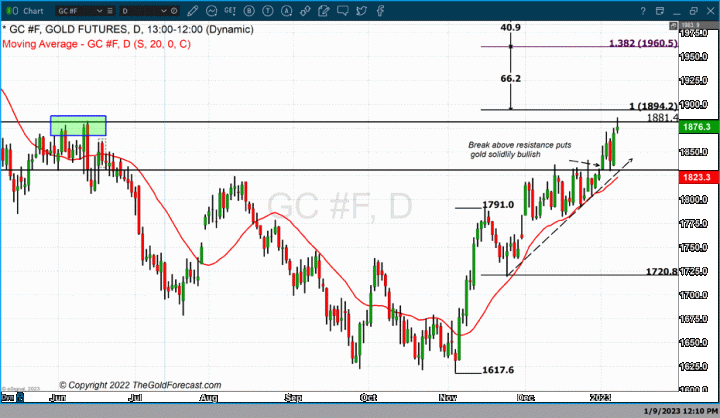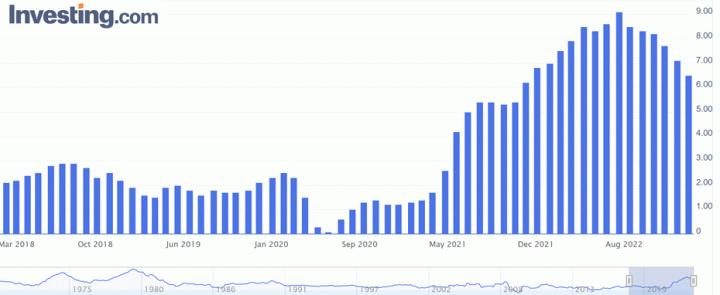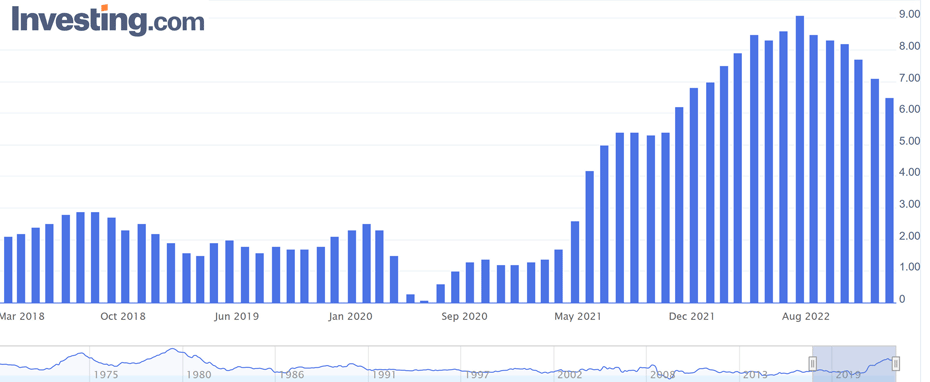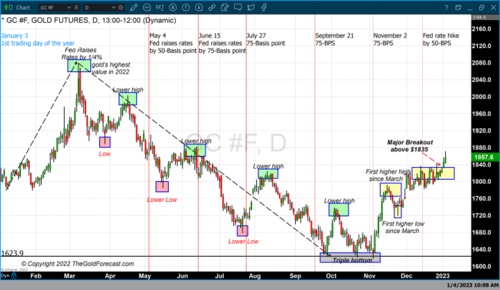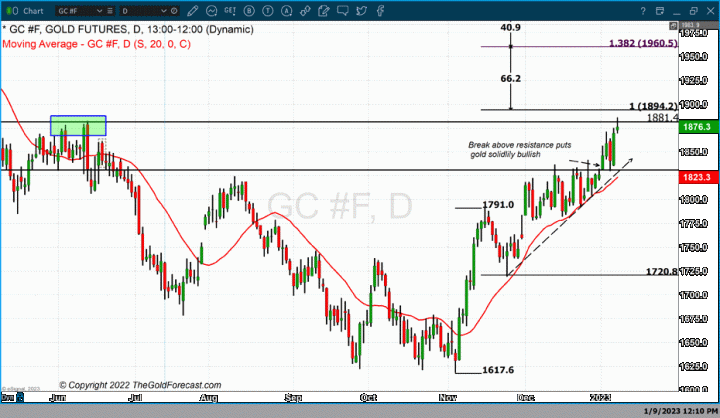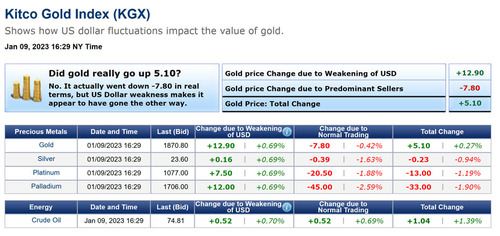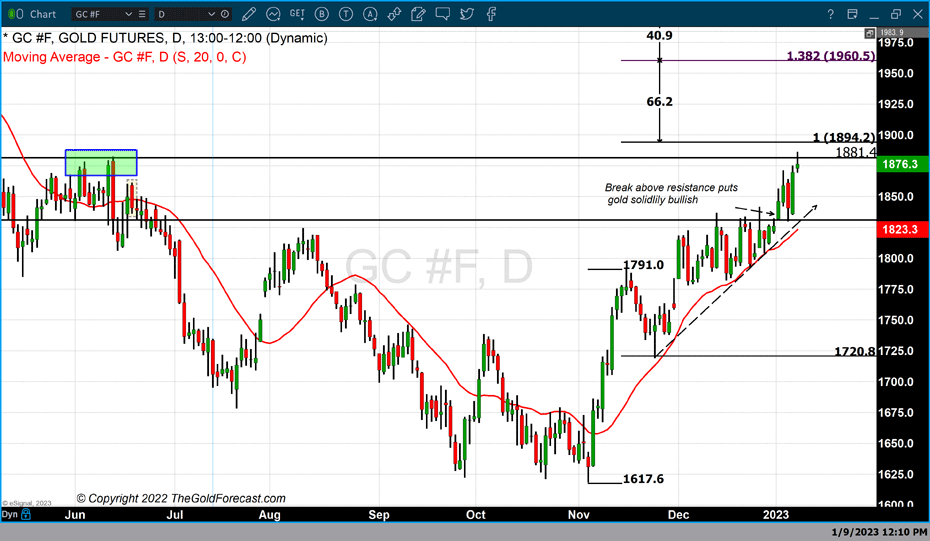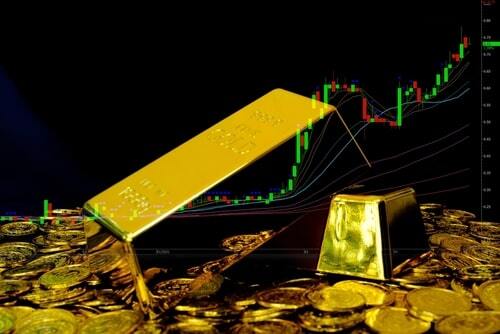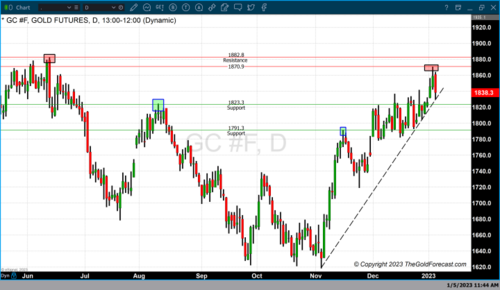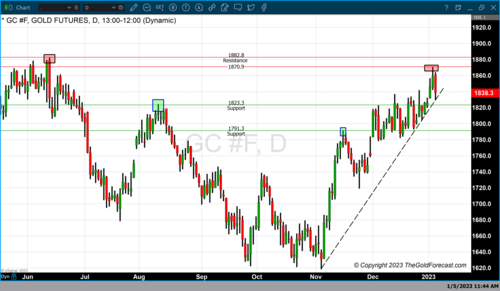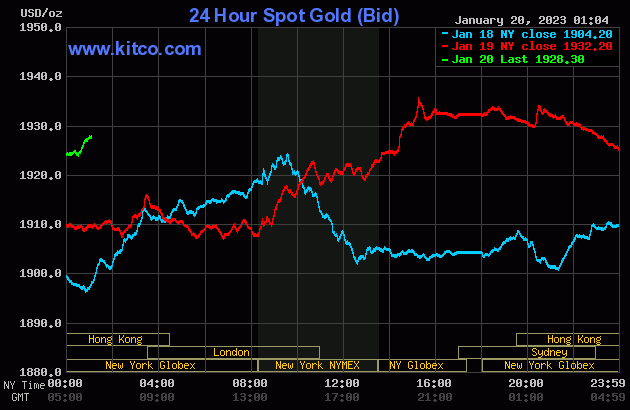
Solid gains for gold on bullish charts, some safe-haven buying
Gold prices are solidly higher and near this week’s nine-month high in midday U.S. trading Thursday. The technical traders continue to flow to the long side of the gold market due to bullish charts. Some modest safe-haven demand may be surfacing due to worries about the U.S. government going into default on its debt. February gold was last up $13.40 at $1,920.50 and March silver was up $0.048 at $23.695.
The U.S. Treasury Department said it is poised to take defensive action to prevent a default that could do "irreparable harm" to the economy, reports said.
Global stock markets were mixed but mostly lower overnight. U.S. stock indexes are lower at midday. The U.S. stock index bulls were derailed Wednesday when U.S. retail sales data came in weaker than expected, which revived notions the U.S. economy could slip into recession in 2023. The U.S. government debt concerns are also limiting buying interest in stocks.
.gif) The world could run out of gold by 2050 as demand grows to keep up with evolving society, says researcher
The world could run out of gold by 2050 as demand grows to keep up with evolving society, says researcher
The key outside markets today see the U.S. dollar index slightly lower. Nymex crude oil futures prices are higher and trading around $81.00 a barrel. Meantime, the yield on the benchmark U.S. 10-year Treasury note is presently fetching around 3.38%percent. U.S. Treasury yields have dropped in the wake of a tamer U.S. producer price index report on Wednesday and the weaker U.S. retail sales report.
.gif)
Technically, February gold futures prices hit a nine-month high Tuesday. Bulls have the solid overall near-term technical advantage. A 2.5-month-old uptrend is in place on the daily bar chart. Bulls’ next upside price objective is to produce a close above solid resistance at $1,950.00. Bears' next near-term downside price objective is pushing futures prices below solid technical support at $1,870.00. First resistance is seen at this week’s high of $1,931.80 and then at $1,950.00. First support is seen at $1,900.00 and then at $1,885.00. Wyckoff's Market Rating: 8.5
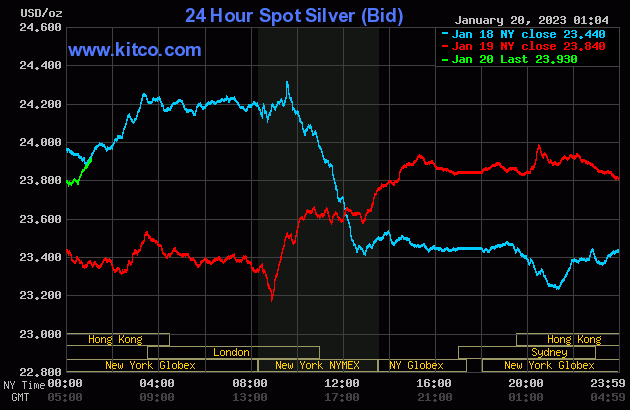
March silver futures bulls have the overall near-term technical advantage. However, they have faded recently as a four-month-old uptrend on the daily bar chart has turned into sideways trading. Silver bulls' next upside price objective is closing prices above solid technical resistance at $25.00. The next downside price objective for the bears is closing prices below solid support at $22.50. First resistance is seen at $24.00 and then at $24.50. Next support is seen at the January low of $23.26 and then at $23.00. Wyckoff's Market Rating: 6.5.
March N.Y. copper closed down 40 points at 423.05 cents today. Prices closed nearer the session high today. Prices Wednesday hit a 6.5-month high. The copper bulls have the solid overall near-term technical advantage. However, the bulls are short-term exhausted. A three-month-old uptrend is still in place on the daily bar chart. Copper bulls' next upside price objective is pushing and closing prices above solid technical resistance at 450.00 cents. The next downside price objective for the bears is closing prices below solid technical support at 400.00 cents. First resistance is seen at today’s high of 426.85 cents and then at 430.00 cents. First support is seen at today’s low of 416.80 cents and then at this week’s low of 411.05 cents. Wyckoff's Market Rating: 7.5.
By Jim Wyckoff
For Kitco News
Tim Moseley


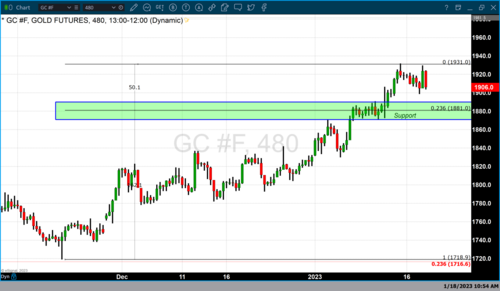

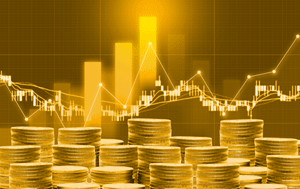 With gold ending the week above $1,900, analysts turn their focus to $2,000
With gold ending the week above $1,900, analysts turn their focus to $2,000
